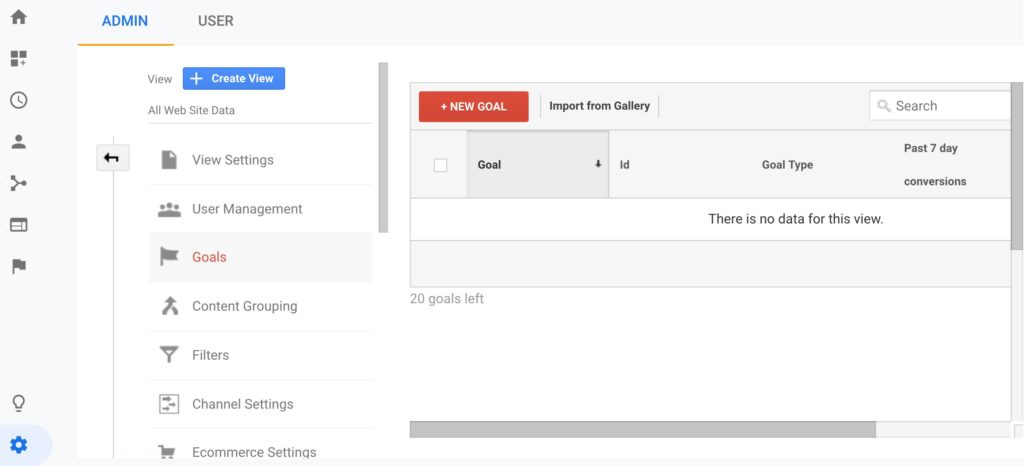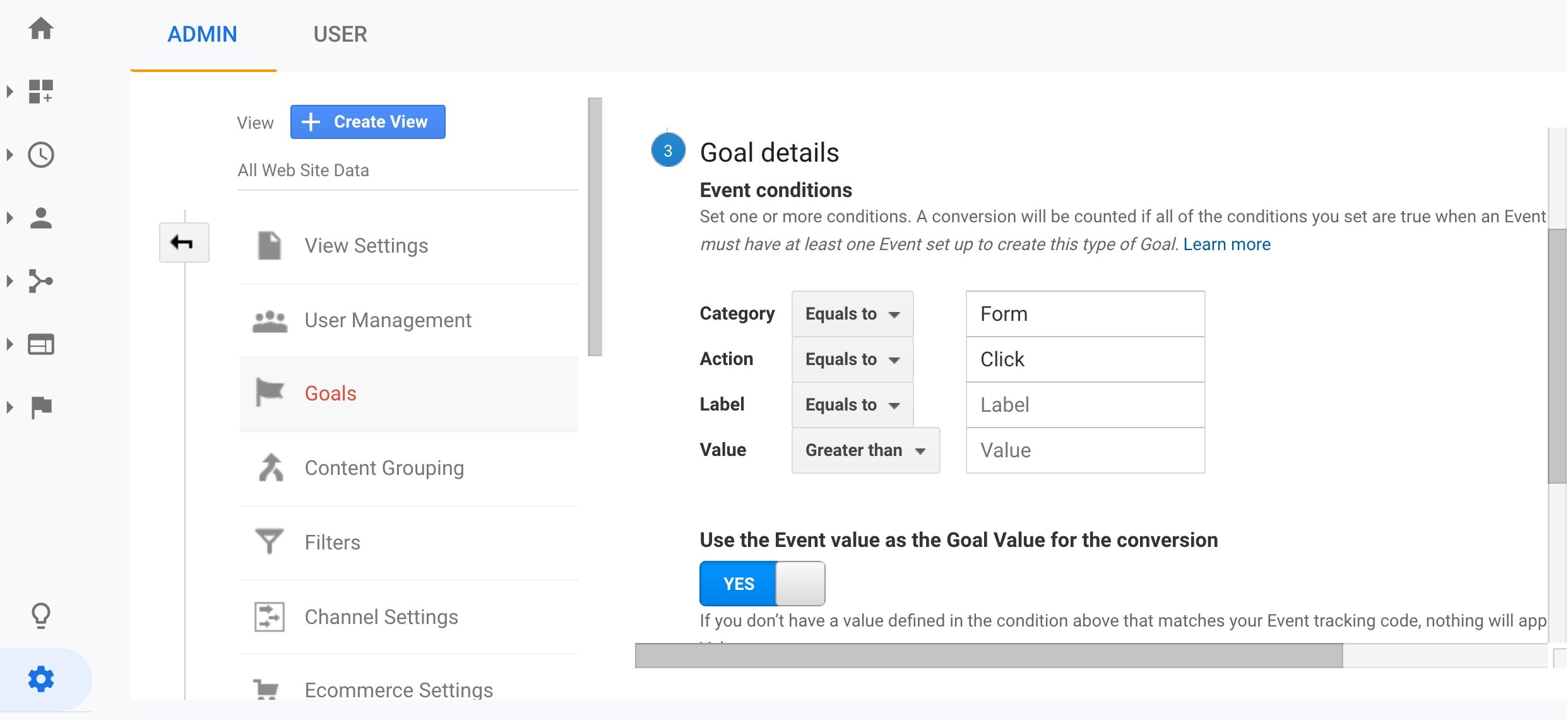Discover the Limitations of Google Analytics Goals: Introducing the Data Types That Remain Untrackable
As services increasingly depend on data-driven decision-making, recognizing the constraints of devices like Google Analytics comes to be critical. While Google Analytics Goals offer useful understandings into user interactions, there exist information kinds that avoid tracking, presenting challenges to a detailed understanding of individual habits. These untrackable data kinds raise inquiries regarding the accuracy and efficiency of the analytics data that organizations greatly depend upon for their electronic approaches. Interested to reveal the covert blind places in your information analysis procedure?
Insufficient User Journey Tracking
Incomplete individual journey tracking within Google Analytics can prevent the capability to precisely evaluate customer habits. When the customer journey is not completely tracked, there are spaces in the data that avoid a thorough understanding of exactly how users communicate with a site. This absence of understanding can result in missed out on chances for optimization and improvements to the individual experience.
One common issue with incomplete individual journey tracking is the lack of ability to see the full path that individuals take before completing a goal or leaving the website. Without this details, it is testing to identify where users might be experiencing obstacles or rubbing factors that prevent them from transforming. Additionally, insufficient monitoring can obscure the impact of certain advertising efforts or web site changes on individual habits.
To address this restriction, it is crucial to establish appropriate tracking devices within Google Analytics to catch the whole user trip. This might entail setting up occasion monitoring, objective funnels, or using devices like Google Tag Supervisor to ensure that no important communications go unrecorded. By getting a comprehensive view of the user trip, web site owners can make even more educated choices to boost individual interaction and drive conversions.
Acknowledgment Difficulties
Navigating through attribution difficulties in Google Analytics calls for a thorough understanding of just how different touchpoints add to the total conversion procedure. Attribution challenges arise from the complexity of modern-day consumer trips, where users interact with multiple channels prior to converting.
One usual attribution challenge is the trouble in connecting conversions to the correct source, specifically in situations where customers communicate with several channels prior to converting. This can lead to errors in identifying which marketing initiatives are driving the most conversions. Furthermore, cross-device monitoring positions an additional attribution challenge, as customers commonly change between tools during their journey, making it testing to track their communications seamlessly. Marketing experts should carefully examine and analyze acknowledgment data to make enlightened decisions and optimize their advertising and marketing approaches efficiently.
Offline Conversions
Given the obstacles connected with associating conversions precisely in online networks, the dimension of offline conversions offers a substantial opportunity for online marketers seeking a much more thorough understanding of their clients' trip. Offline conversions describe actions that consumers absorb the real world, such as making purchases in brick-and-mortar stores or over the phone, going to occasions, or involving with published materials - what data is google analytics goals unable to track. These conversions are important for services that operate both online and offline, as they provide useful insights into the performance of advertising campaigns across numerous touchpoints
Tracking offline conversions generally presented a considerable difficulty for online marketers, as it was challenging to attach these activities back to particular on-line communications properly. Nonetheless, with innovations in modern technology, such as the assimilation of CRM systems, one-of-a-kind identifiers, and coupon codes, services can currently bridge the void between online and offline data to get a much more all natural view of client actions. By properly determining offline conversions, online marketers can maximize their approaches, allocate sources more effectively, and ultimately boost the total customer experience.
Cross-Device Tracking
Cross-device tracking plays a critical duty in recognizing the interconnected nature of consumers' electronic interactions across several look at more info gadgets. In today's omnichannel world, where customers effortlessly switch over in between mobile phones, tablet computers, and desktops, tracking their habits across these tools is essential for marketing experts to get an extensive view of their client trip.

Moreover, privacy issues and policies such as GDPR and CCPA have better challenging cross-device monitoring. With customers requiring even more control over their information and increased limitations on monitoring modern technologies, marketing professionals have to discover ingenious and privacy-compliant methods to connect user communications across devices.
Dynamic Material Involvement
Recognizing customer involvement with dynamic content is crucial in optimizing electronic advertising and marketing methods for boosted target market communication. Dynamic content describes site elements that transform based on customer actions, preferences, or various other elements, providing a customized experience. Nevertheless, tracking user communications with dynamic content positions challenges for standard analytics tools like Google Analytics.
While Google Analytics can track basic interactions like clicks and page sights, it might struggle check out here to record even more nuanced interactions within dynamic content. what data is google analytics goals unable to track. Metrics such as time invested in particular vibrant aspects, hover activities, or interactions within pop-ups are typically not conveniently measurable making use of typical tracking techniques. This limitation impedes marketing professionals' ability to fully grasp how customers are involving with dynamic content and tailor their techniques accordingly

Final Thought
Finally, Google Analytics goals have constraints in tracking insufficient user trips, associating conversions properly, catching offline conversions, tracking cross-device interactions, and gauging dynamic content engagement. These constraints highlight the relevance of discovering added tracking techniques and devices to acquire a more extensive understanding of individual habits and conversions past what Google Analytics can give.
While Google Analytics Goals deal valuable understandings right into customer interactions, there exist data types that elude monitoring, posing challenges to a Full Article detailed understanding of user actions.Insufficient individual trip monitoring within Google Analytics can hinder the capacity to precisely analyze customer actions. When the individual trip is not fully tracked, there are gaps in the information that protect against an extensive understanding of just how customers interact with an internet site.One common issue with incomplete user journey monitoring is the inability to see the complete path that customers take in the past completing a goal or leaving the website. By gaining a comprehensive sight of the user trip, site owners can make more enlightened choices to enhance individual engagement and drive conversions.
Comments on “Comprehending What Data Is Google Analytics Goals Unable to Track”